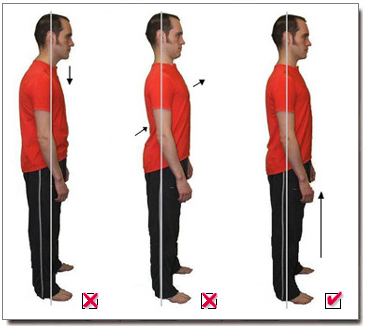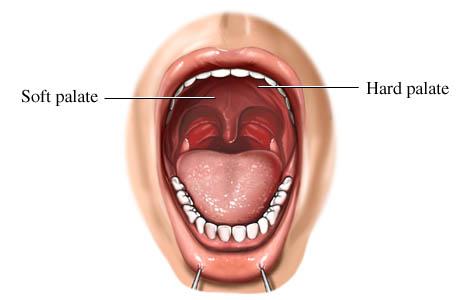A Beginner's Guide to the Art of Opera

Opera singing is known for its passion, art, and drama which works to sway the audience’s emotions in a particular way. The beautiful art first originated in Italy in the sixteenth century from the Medici family in Florence and soon scattered around the rest of Europe, (Hanning, n.d). Having an ability to sing, specifically the art of opera, can be an incredible talent, but it must be used properly. There are a lot of techniques and skills that are involved in training to become a proper vocalist such as proper practise, time, exercises, knowledge, and experience before someone can truly conquer professionalism. Webster’s online dictionary has three main definitions for the verb “sing.” The three definitions include: to produce musical tones by means of the voice, to utter words in musical tones and with musical inflections and modulations, and to deliver songs as a trained or professional singer, (Merriam-Webster, n.d). Therefore, if someone is interested in the art of opera singing, then it is important to take the correct steps to train themselves so that they can become a properly trained professional vocalist. The two main areas of focus with professional opera singing are breath and body.
Breath
Breath may be considered a well-known aspect of singing considering people have to breathe to produce sound; however, body may be an area related to singing which people are uninformed about. Beginning with breath, it is important to understand what a proper singing breath is. It is common for many people to mistake a proper breath with just inhaling a lot. However, a large inhale is not proper technique if the air flow is not hitting one’s diaphragm. When humans take a breath the air usually sits in their chest area around their lungs which makes their shoulders rise up and down, but this is not proper and will not provide a singer with a solid sound through the exhale. Many singers will hear from their instructors that “it is okay to look fat” while singing because a proper breath goes deep into the torso and push one’s stomach and bowels forward. In a simpler explanation, a proper breath will make someone’s tummy look like it is sticking out. The difference between a singer’s breath and a regular breath is that a singer’s breath allows the body to have more room for the air-flow which structures the sound with more stability and provides an open release. If a singer does not take a proper breath then their voice sounds squished and may result in the singer going sharp or flat (singing the note slightly above, or below, instead of the note they desire to sing). Therefore, instead of the shoulders rising up and down when inhaling and exhaling, the stomach should push forward and back. A common breathing exercise that new singers will do when first learning how to take a proper breath is to lay on their back with a book on their stomach. Once on their back, the exercise is done by attempting to take a breath deep enough so that the stomach is able to push the book up and down. The book breathing exercise will allow a new singer to be able to feel what a proper breath feels like and where they need to push the air in order to open up their body to release a well-structured sound. Overall, it is extremely important for a new singer to begin with how to take a proper breath before they start to learn about their body.
Body: How to Stand
After mastering the technique of breathing, there are important lessons about the human body that a singer should be aware of. The main areas of the body that may need adjusted for a new singer are proper stance and proper space in the mouth. Proper stance is extremely important for a singer because if someone is not standing properly then the sound quality may be tarnished. As stated earlier, a singer requires the air to flow easily from their nose all the way down to the pit of their stomach. In order to achieve proper air-flow, the singer needs to stand in a very particular way to allow the air-flow to move to the places in the body it needs to sit. The most common stance for any opera singer is to have their feet shoulder width apart with their toes sticking slightly out at either side. Also, aside from just the feet and legs, a singer must stand straight up without their shoulder being hunched (for a clear visual see image 1). Standing properly allows the air to move smoothly from where the singer inhales and down into their diaphragm to make a nice, open sound. Without proper stance, a singer’s quality of voice may be diminished.

Body: the Mouth
The second important body part that needs to be adjusted is a singer’s mouth. It is true that opera singers leave a lot of open space in their mouth and this is because it creates a beautiful, structured, open sound. Space happens in three areas in the mouth which are in between the teeth, with the tongue, and with the soft pallet (where the uvula sits). Beginning with the teeth, the general rule is that the teeth at the back of a singer’s mouth must be wide enough to fit two fingers in between. Another common exercise for singers to practise is singing an entire song with two fingers sticking in their mouth to make sure they keep proper space at the back. Although it is not comfortable, it allows the singer to understand the feeling of keeping the back of their teeth wide enough while producing sound.
The tongue is another important part in the mouth to help generate space. It is natural for a human’s tongue to be slightly lifted in the mouth when speaking; however, when singing, it is important to try and keep the tongue as flat as possible. A helpful tool is to think about pressing the tip of the tongue against the back of the teeth when singing which usually allows the tongue to sit flat. A flat tongue is another way to create open space in the mouth which, again, allows an open sound rather than a flat or sharp note.
Lastly, the soft pallet may be the most important part of the mouth that a singer must master the feeling of. The soft pallet is at the back of the mouth right above where the uvula sits (see image 2). Mastering the soft pallet can be extremely difficult because a singer must be able to feel and understand the way that it moves. When singing, the soft pallet needs to be lifted enough so that there is enough space for the air and sound to flow through, but how does one know what it feels like to lift the soft pallet? The best way to understand what it feels like to have a lifted soft pallet is simply just to yawn. When yawning, it is easy to feel the sensation of the soft pallet being lifted significantly. Another way to make the soft pallet lift is to take a deep breath through the nose. Although breathing through the nose does not lift the soft pallet as much as a yawn does, it is still lifting it enough to create space. The yawning technique is used to just get a proper feeling because a singer cannot yawn every time they are about to sing a line in the song, but they can take a good, deep breath through their nose. The trick to the soft pallet is learning how to keep it up once it is up. Once a singer has grasped the basic understanding of lifting the soft pallet it is easy for them to lift it up and down on demand; however, for a new singer, it is difficult to keep it lifted. The best way to learn how to lift the soft pallet is to simply keep doing tricks to feel it rise until the singer understands how to move the muscle on their own. All three areas of space in the mouth are necessary to create a solid, open sound so that the singer can hit the right notes with their vocal strength.

Important Things to Keep in Mind
There are a lot of important rules, practises, and things to remember when training one’s voice for opera singing, but the basics have been covered above. There are many sources of information which can be found on the internet for learning how to sing, but the best way is to find a professional vocal coach. Therefore, when looking for a vocal coach, the new singer should seek out someone who has completed up to their grade eight exam with the royal conservatory of music. There are many jobs that a professional singer can do and some examples of careers are being a private coach, teaching music in elementary, secondary, or post-secondary schools, singing professional opera with an orchestra, auditioning for musicals, and many more. Therefore, if someone has a true love and passion for the art of music and singing, then taking the correct steps to become a professionally trained opera singer can be significantly beneficial to their future.
Works Cited
Hanning, B. R. (n.d.). Opera. Retrieved July 10, 2016, from https://www.britannica.com/art/opera-music
Sing Better. (2015, August 26). Retrieved July 10, 2016, from http://www.infobarrel.com/Become_a_better_singer__4_steps_to_improve_a_beginners_singing
Sing. (n.d.). Retrieved July 10, 2016, from http://www.merriamwebster.com/dictionary/sing
Singing Posture [Digital image]. (2016). Retrieved July 10, 2016, from http://www.snagmusic.com/best-online-voice-lessons/



